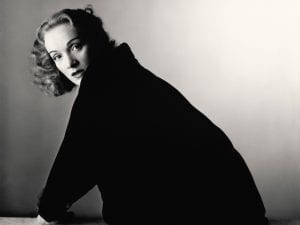British photographer Lottie Davies is one of 100 artists selected for the Aesthetica Art Prize 2015. Longlisted for Waterloo Station (Anthony and Jay, 1975) from her ongoing Love Stories project, Davies depicts collected stories remembered from couples in long-standing relationships. Reflecting on the simple and unremarkable fact that almost every person on the planet exists because their parents met, at some point in the past, the artist brings to life an intimate moment from the past. As part of our countdown to the Aesthetica Art Prize call for entries deadline, we speak to Davies about her developing career and its progress since being featured in Aesthetica issue 39 in 2011.
A: As a visual artist, you have worked on a variety of projects. In your opinion, what are the key differences between practising independently and working on commissions?
LD: Well, generally you’re coming from totally different directions in each. In my personal practice, I can develop images and stories as I feel the work dictates, change my mind if I feel like it, and allow myself to imagine and create every detail. And the time pressures are rarely the same: with my own work I can wait for seasons to change and leaves to grow or fall, whereas with commissioned jobs, the work is often needed within a few weeks, and waiting for the ideal circumstances just isn’t an option. In the commissioned space, the picture is someone else’s baby. I am tasked with bringing to life a concept which someone else has come up with, and they usually have a clear idea about how they would like it to be. With my contribution of course, but it’s their thing, and they’re paying the bill! So it’s much more of a collaborative, team-led experience shooting for someone else.
A: Pivotal moments and snippets of life stories play a significant part in your imagery. Where do you look for inspiration? Are you able to draw from important moments in your own life?
LD: I find the human instinct to tell stories constantly fascinating. We do it all the time, we chat about everyday encounters as well as pivotal moments in our own lives. I get a huge amount of inspiration from literature, particularly writers like Paul Auster and John Steinbeck (I love American writing) and from the cinema and theatre. Creating stories with real or fictional characters, and working with actors, who can embody and bring to life a person who previously only existed in the imagination or on the page, is always inspiring.
A: We first featured you in issue 39 as one of Two Emerging Photographers You Should Know. How has your work developed since then, and how has the continued exposure from Aesthetica influenced your career?
LD: Since then I have produced more work around the ideas of time, place and memory – specifically Ten Miles 1976-1986 and Here in 2012, and Dust to Dust: Mediations on Old Wars last year. I was also commissioned to contribute to The Crisis Commission in 2014 which resulted in Home: My mother was born in a bucket. The exposure from Aesthetica has been great, it’s brilliant to know that the magazine values my work, and that thanks to publication and the competition, more people may see it and hopefully enjoy it.
A: Many of your photographs centre on portraiture taken in what seems to be highly controlled environments. Can you describe the ways in which the shooting process changes from working in the studio to on location?
LD: I rarely shoot in the studio these days; I am drawn to real places with all their idiosyncrasies and flaws and the evidence of time having taken place. Studio work is much easier to control, of course, because the environment is designed perfectly for photographers, but I find the blankness of an empty space just too plain. Location work involves a lot more preparation, but I find it more satisfying; I enjoy working with a space, or a landscape, and figuring out what I need to do to create the image I can see in it. Finding a great location is like discovering a great piece of wood if you were a sculptor – you can see the potential to carve the image from it which is in your head. Practically speaking, the process generally involves driving many miles, constantly checking the weather forecast, and having decent waterproofs!
A: Looking into 2015 and beyond, what future projects do you have lined up?
LD: I have a few things on the go at the moment, firstly Love Stories, an image from which was longlisted in the Aesthetica Art Prize (Waterloo Station, Anthony and Joy 1975). This is a project I have been working on for a while now and hope to make more images later in the year. Observations is in a very different vein to my usual work, in that it is totally about ‘found’ images of everyday things, which I shoot on my Mamiya 7 rangefinder film camera. It’s good to just ‘take pictures’ as well as create big staged narrative pieces, and I’m enjoying the change of pace this project affords. And the main project I am currently working on is called Quinn – it’s a piece of narrative fiction, using large-format stills shot on location, video, still life photographs, found objects and also written text. It’s a long-term adventure, begun last June and which I aim to complete by the end of 2016.
Visit the artist’s website www.lottiedavies.com.
See previous coverage on Lottie Davies www.aestheticamagazine.com/two-emerging-photographers-you-should-know.
Entries are open until 31 August 2015. Register your artwork at www.aestheticamagazine.com/art-prize.
Follow us on Twitter @AestheticaMag for the latest news in contemporary art and culture.
Credits
1. Lottie Davies, Waterloo Station (Anthony and Jay, 1975), 2013. Courtesy of the artist.





